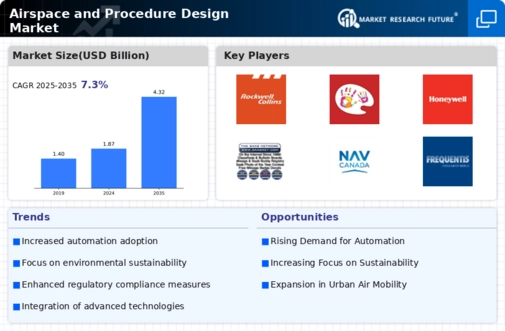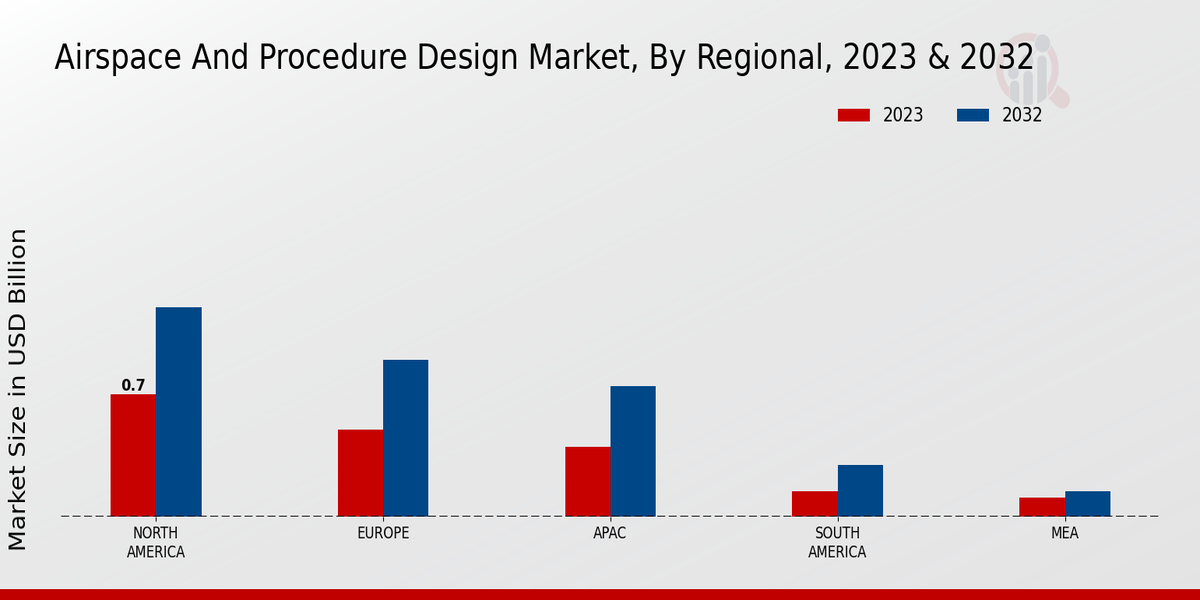Increased Air Traffic
The Global Airspace and Procedure Design Market Industry is significantly influenced by the rising volume of air traffic. As global economies expand and travel demand increases, air traffic is expected to grow substantially. According to projections, air traffic is anticipated to double over the next two decades, necessitating more efficient airspace designs to accommodate this surge. This increase in traffic not only drives the need for enhanced airspace management systems but also encourages the development of new procedures to optimize air traffic flow, thereby contributing to the market's growth.
Regulatory Compliance
Regulatory compliance plays a pivotal role in shaping the Global Airspace and Procedure Design Market Industry. Governments worldwide are increasingly enforcing stringent regulations to ensure safety and efficiency in air travel. For example, the International Civil Aviation Organization (ICAO) sets global standards that member states must adhere to, influencing airspace design and management practices. This regulatory landscape compels stakeholders to invest in modernizing their airspace systems, thereby driving market growth. As compliance becomes more complex, the demand for innovative solutions that facilitate adherence to these regulations is likely to rise.
Global Economic Growth
Global economic growth is a driving force behind the expansion of the Global Airspace and Procedure Design Market Industry. As economies recover and develop, there is a corresponding increase in air travel demand, prompting the need for more sophisticated airspace management solutions. The growth of the middle class in emerging markets is particularly noteworthy, as it fuels demand for air travel. This economic expansion necessitates the modernization of airspace infrastructure and procedures to accommodate increased passenger and cargo traffic, thereby propelling the market forward.
Technological Advancements
The Global Airspace and Procedure Design Market Industry is experiencing rapid technological advancements that enhance efficiency and safety in air traffic management. Innovations such as advanced automation systems, artificial intelligence, and data analytics are being integrated into airspace design processes. For instance, the implementation of AI-driven tools allows for real-time decision-making, optimizing flight paths and reducing delays. As a result, the market is projected to grow from 1.87 USD Billion in 2024 to 4.32 USD Billion by 2035, reflecting a compound annual growth rate of 7.89% from 2025 to 2035.
Environmental Sustainability Initiatives
Environmental sustainability initiatives are becoming increasingly critical within the Global Airspace and Procedure Design Market Industry. As concerns over climate change intensify, aviation stakeholders are prioritizing eco-friendly practices. This includes the design of airspace procedures that minimize fuel consumption and emissions. For instance, the adoption of Continuous Descent Approaches (CDA) can significantly reduce the environmental impact of aircraft during landing. Governments and organizations are likely to invest in sustainable airspace designs, which may lead to innovative solutions that balance operational efficiency with environmental responsibility, thus fostering market growth.























Leave a Comment